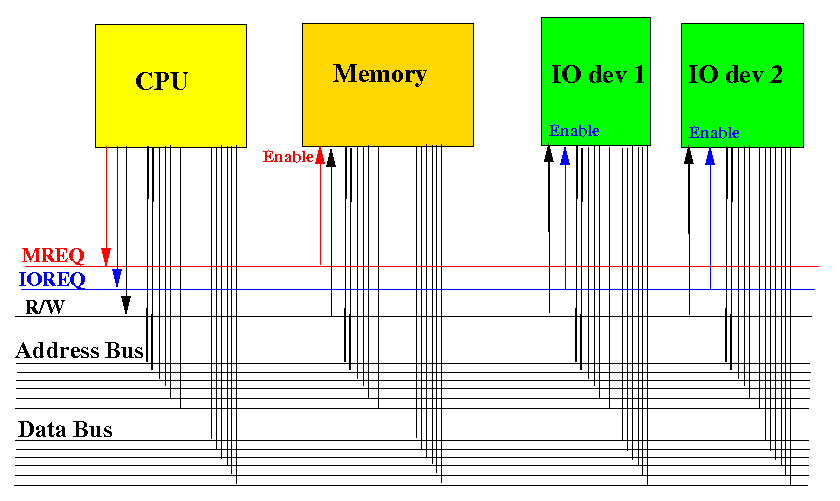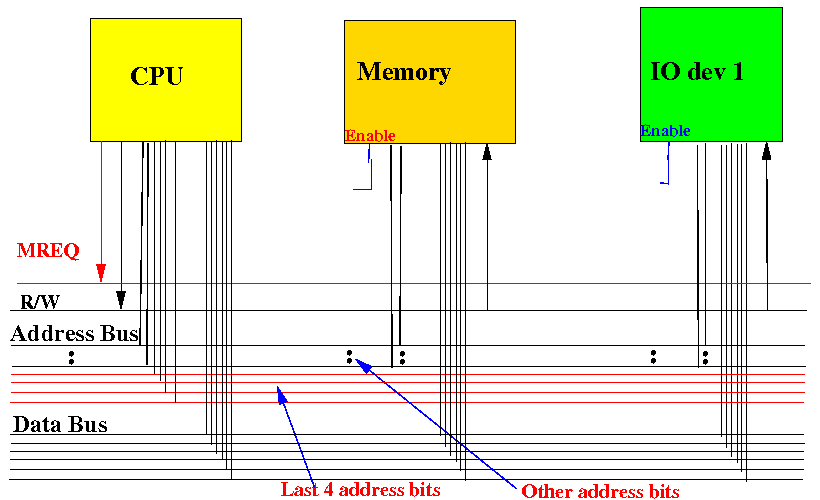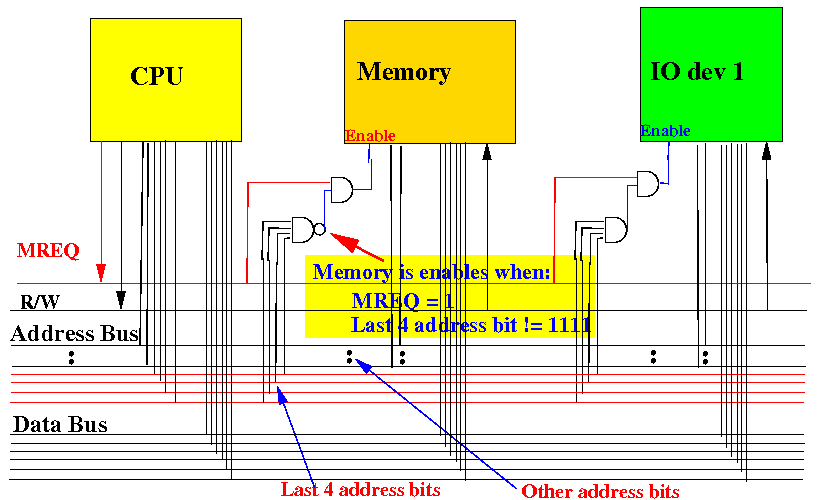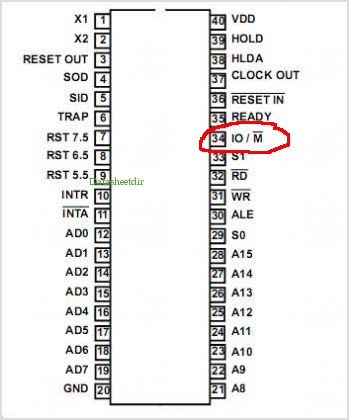Identifying (= addressing)
the special purpose registers
in an IO device
- In order for the
CPU to
read/write the
special purpose registers in
an IO device, these
registers (= memory cells) must be
addressable on the
system bus
I.e.:
- Each
special purpose registers in
an IO device is
assigned a
unique
address on the
system bus !!!
|
- There are
2 techniques used
to assign addresses to
the registers in an
IO device:
-
Standard IO:
uses a separate
IO address
space
-
Memory-mapped IO:
uses a subset of
memory addresses to
identify (= address)
registers in
IO devices
|
|
The Standard IO addressing technique
- In the
standard IO technique,
IO devices and
memory location
use separate address spaces
- Two
separate "address spaces"
are implemented
using
two (=2) different signals
that identify the
2 address space
- Analogy:
suppose
2 lotto games both have
6 numbers
- The winning numbers
in Lotto game 1 can be
1 2 3 4 5 6
- The (same) winning numbers in
Lotto game 2
can be also be
1 2 3 4 5 6
|
The winning numbers (1 2 3 4 5 6) in
lotto game 1 are
technically different than the
winning numbers (1 2 3 4 5 6) in
lotto game 2 -
although they are
the same numbers !!!
(E.g.: they will win a
different amount of money...)
|
How to implement
separate
memory address and IO address spaces
The
MReq
signal
signals a
memory address
and
the
IOReq signal
signals an
IO device address.

The CPU will
only
assert
one of the
MReq or
IOReq signals !!!
CPUs that uses the
standard IO addressing technique
CPUs that uses the
standard IO addressing technique
The memory-mapped
IO addressing technique
The
memory-mapped
IO addressing technique
In memory-mapped IO,
the
address space is
partitioned into
2
disjoint
ranges
Example of
a address space partitioning:
Address (binary) Use for
-----------------------------------------------------------
00000000 00000000 00000000 00000000 Memory
00000000 00000000 00000000 00000001 Memory
00000000 00000000 00000000 00000011 Memory
....
11100000 00000000 00000000 00000000 Memory
11100000 00000000 00000000 00000000 Memory
....
11101111 11111111 11111111 11111111 Memory
11110000 00000000 00000000 00000000 IO device
11110000 00000000 00000000 00000001 IO device
....
11111111 11111111 11111111 11111111 IO device
|
Combinatorial circuits are used
to
translate the
ranges to
activate
memory/IO devices
The memory-mapped IO addressing technique
Circuits to
implement the
address space partitioning in the
previous example:

The memory-mapped IO addressing technique
We enable
an IO device when
MReq=1
and
when the
last 4 bits in the address=1111:

The memory-mapped IO addressing technique
We enable
an IO device when
MReq=1
and
when the
last 4 bits in the address≠1111:

CPUs that uses the
memory-mapped IO addressing technique
CPUs that uses the
Memory-Mapped IO addressing technique
❮
❯






